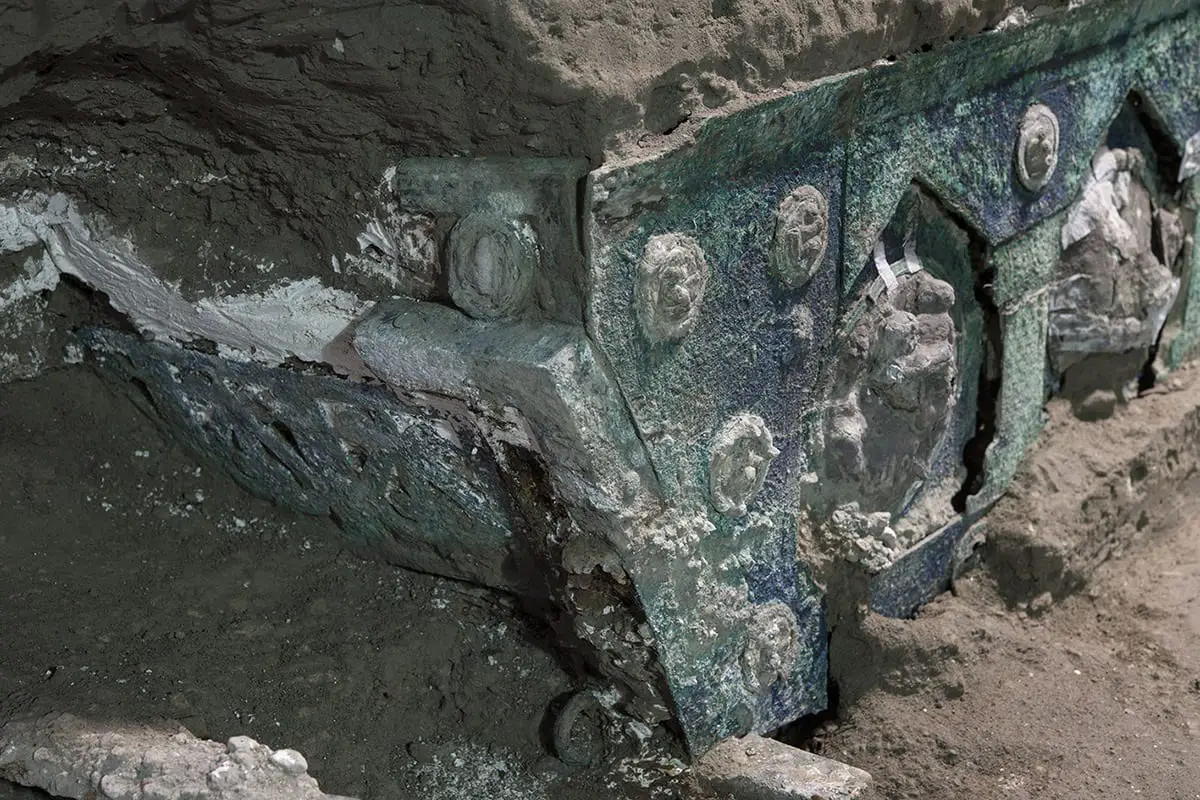Archaeologists from the Archaeological Park of Pompeii, and the Public Prosecutor’s Office of Torre Annunziata have announced the discovery of an intact Roman Ceremonial Chariot excavated near the Roman city of Pompeii.
Pompeii, a UNESCO World Heritage Site, was a Roman city located in the modern commune of Pompei near Naples in the Campania region of Italy.
At its peak, Pompeii had a population of around 20,000 inhabitants and became an important passage for goods that arrived by sea, to be sent toward Rome or southern Italy along the nearby Appian Way.
Pompeii, along with Herculaneum and many villas in the surrounding area was buried under 4 to 6 m (13 to 20 ft) of volcanic ash and pumice in the eruption of Mount Vesuvius in AD 79.
The chariot was unearthed during rescue excavations to combat illegal tunnelling by looters in search of archaeological treasures.

Archaeologists focused their attention on a large villa complex in Civita Giuliana north of the ancient city walls, where in 2018 the remains of a stable and 3 equidae, including a horse still in its harness was discovered.
The team excavated to a depth of 6 metres through the volcanic material, revealing a large ceremonial chariot called a Pilentum in a double-level portico, with its four wheels still intact, along with its iron components, bronze and tin decorations, mineralised wood remains and imprints of organic materials such as ropes and floral decoration.

Given the extreme fragility of the chariot and the risk of further illegal looting, archaeologists have worked intensively to stabilise the remains in order to move to the Archaeological Park of Pompeii for restoration and reconstruction.
Dario Franceschini, Minister of Culture said: “What has been announced today is a discovery of great scientific value. A round of applause and thanks to the Archaeological Park of Pompeii, the Public Prosecutor’s Office of Torre Annunziata and to the officers of the Carabinieri Headquarters for the Protection of Cultural Heritage for the collaboration which has averted the theft and illegal sale of these extraordinary finds on the black market”.
Interactive Map of Pompeii – View Full Screen: Click Here
Map Credit : Pompeii Bibliography and Mapping Project
Header Image Credit : PompeiiSites





